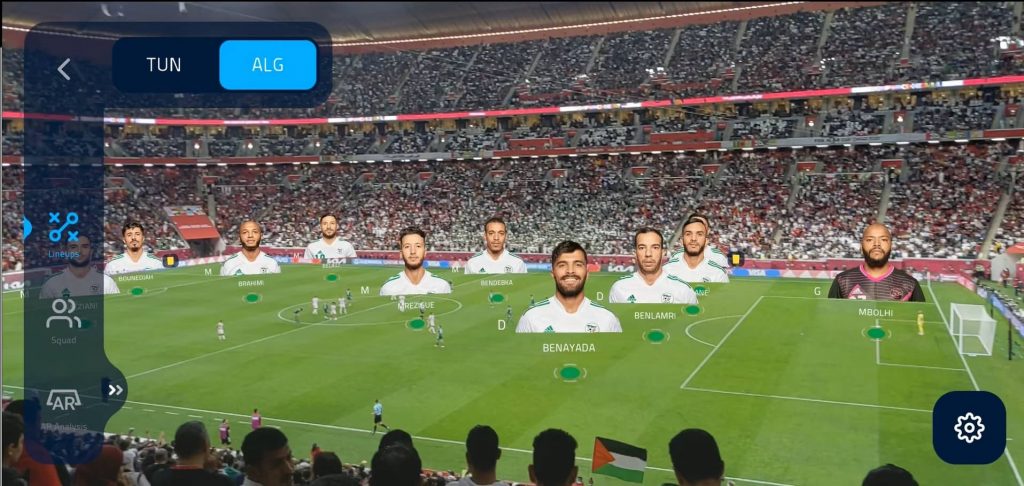In recent years, augmented reality (AR) technologies have developed significantly, playing an essential role in the world of video games, particularly in football simulations. AR not only enhances visual elements but also transforms the ways players interact with games, offering new opportunities for emotional engagement and immersion. In this article, we will explore how AR impacts football video games, the benefits it brings, and the new possibilities it opens up for fans.
New Opportunities with Augmented Reality
AR provides an interactive experience that goes beyond traditional gaming. For example, players can engage with virtual elements situated in their real environment, creating unique opportunities for training and gameplay. With AR, football simulators can include features that allow players to study tactical aspects of the game in real time, observing player positions and potential actions.
Additionally, AR can be utilized to enhance the excitement around betting. For instance, platforms for league of legends betting could integrate AR to create visualizations of player statistics in real time, making the league of legends bet process more informative and engaging. Players can easily compare team statistics and make informed decisions when choosing lol betting sites. This integration creates a dynamic environment where users can enhance their betting experience while following their favorite teams. Moreover, the growing interest in lol esports betting highlights how AR could bridge the gap between gaming and real-world competitions, enhancing user interaction.
Benefits of AR for Players
The integration of AR into football video games offers several crucial advantages for players. First, it promotes deeper immersion in the game. With AR, players can feel as if they are in the stadium, watching matches from a unique perspective, which heightens the emotional impact of the game.
Secondly, AR provides opportunities for creative ways to conduct games and competitions. For instance, AR can be used to create special tournaments where participants compete in the real world enriched with virtual elements. This allows for greater player and spectator engagement, offering new formats for competitions in the world of football video games.
Challenges of Implementing AR
Despite its numerous advantages, the implementation of AR in football video games also faces certain challenges. First, AR technology requires powerful hardware, which may not be accessible to all players. This could lead to a situation where not all fans can enjoy the new opportunities that AR offers.
Secondly, integrating AR demands significant investment in development and testing. Developers must ensure that virtual elements integrate well with reality and do not distract players from the core gameplay. Poorly implemented AR features can detract from the overall gaming experience.
The Future of AR in Football Video Games
The future of AR in football video games looks promising. With technological advancements and increasing availability of AR gadgets, more players will be able to enjoy enhanced gaming possibilities. Developers will continue to seek new ways to incorporate AR into their games, pushing the boundaries of what is possible in virtual football worlds. From real-time statistics overlaying the gameplay to interactive training sessions that teach players strategies, AR can transform how football is played and perceived in a virtual environment.
At the same time, it is essential to consider player feedback and adapt to their needs. Developers must monitor how players perceive new technologies to create an optimal experience that is not only innovative but also accessible to everyone. This includes ensuring that the AR experiences are user-friendly, accommodating various skill levels, and providing clear instructions for those who may not be familiar with the technology.
Furthermore, as AR becomes more integrated into football gaming, it will be crucial to maintain a balance between enhancing gameplay and preserving the core essence of football. Developers should aim to create experiences that resonate with both traditional football fans and the newer generation of gamers who are more inclined toward technological innovations.
The potential for collaborative AR experiences also exists, where players can engage with friends and compete in real-time, regardless of their physical locations. This could lead to a more social aspect of gaming, transforming how football fans connect and engage with one another, even when they are not on the field.
Conclusion
The integration of augmented reality technologies into football video games opens new opportunities for players, enhancing their experience and engagement. AR not only enriches gameplay but also fosters a more interactive environment, allowing fans to connect with their favorite sports on a deeper level. Despite the challenges associated with AR implementation—such as the need for advanced hardware and significant investment in development—the potential to revolutionize football games is substantial.
As players become more knowledgeable about new technologies, developers must adjust their strategies to meet their expectations and sustain their interest. This includes addressing accessibility issues to ensure that all fans can enjoy the benefits of AR-enhanced gameplay. In addition, developers should prioritize user feedback, continuously refining their offerings to create a more enjoyable and immersive experience.
Looking ahead, AR could become an integral part of the football video game landscape, offering unforgettable experiences. By incorporating AR, developers can create unique gaming formats that captivate both casual players and hardcore fans. The fusion of augmented reality with traditional gaming mechanics promises to not only elevate the gameplay experience but also engage a wider audience, ultimately paving the way for the future of sports gaming.
In conclusion, as technology continues to evolve, the potential for AR in football video games remains vast. Embracing these advancements will not only enhance gameplay but also redefine how fans interact with their favorite sport, creating a more immersive and inclusive gaming community.

